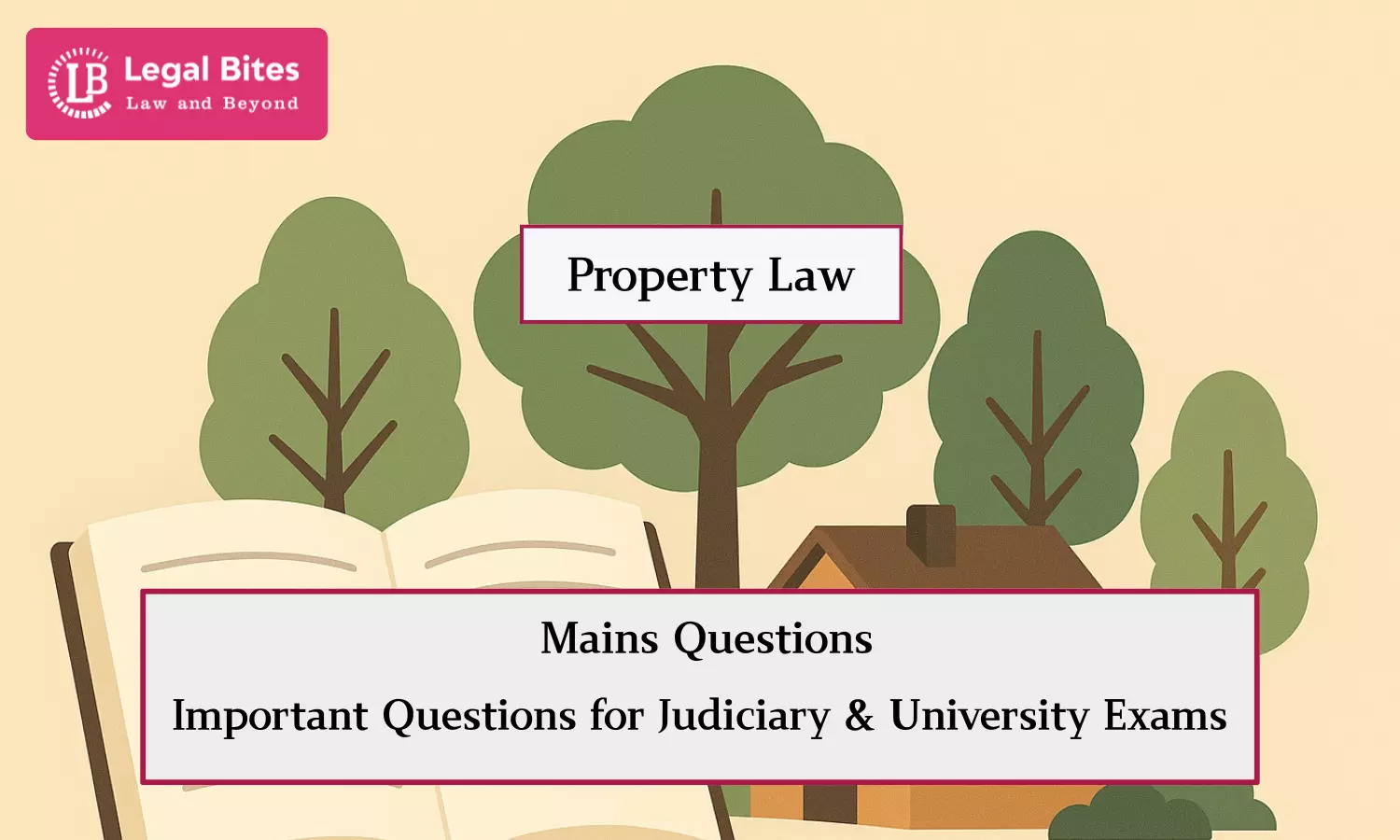Find the answer to the mains question of Property Law only on Legal Bites.

Question: What is immovable property? [RJS 1979, BJS 2006]Find the answer to the mains question of Property Law only on Legal Bites. [What is immovable property?]AnswerThe word property has not been defined in the TP Act, but it has a very wide meaning and includes properties of all descriptions. It includes movable properties such as cases, books, etc., and includes immovable properties such as lands or houses. It also includes intangible properties such as ownership, tenancy, copyrights,...
Question: What is immovable property? [RJS 1979, BJS 2006]
Find the answer to the mains question of Property Law only on Legal Bites. [What is immovable property?]
Answer
The word property has not been defined in the TP Act, but it has a very wide meaning and includes properties of all descriptions. It includes movable properties such as cases, books, etc., and includes immovable properties such as lands or houses. It also includes intangible properties such as ownership, tenancy, copyrights, etc.
As per Section 3, immovable property does not include standing timber, growing crops and grass. The word standing timber includes Babool Tree, Shisham, Nimb, Papal Banyan, Teak, Bamboo, etc. The fruit-bearing trees like Mango, Mahua, Jackfruit, Jamun, etc., are not standing timber, and they are immovable properties (Fatimabibi v. Arrfana Begum, AIR 1980 All 394).
Whether trees can be regarded as movable or immovable depends upon the circumstances of the case. If the intention is that trees should continue to have the benefit of further sustenance or nutriment by the soil (land), e.g., enjoining their fruits, then such tree is immovable property. But if the intention is to cut them down sooner or later for the purpose of utilising the wood for building or other industrial purposes, they would be timber and accordingly be regarded as movable property (Shantabai v. State of Bombay, AIR 1958 SC 532).
Standing Timbers: Standing timbers are trees fit for use for building or repairing houses.
Growing Crop: It includes all vegetable growths which have no existence apart from their produce such as pan leave, sugarcane etc.
Grass: Grass is a movable property, but if it is right to cut grass it would be an interest in land and hence forms immovable property.
As per Section 3(26), General Clauses Act, 1897:
Immovable property shall include land, benefits to arise out of land and things attached to the earth, or permanently fastened to anything attached to the earth.
Indian Registration Act expressly includes under immovable property the benefits to arise out of the land, hereditary allowances, rights of way, lights, ferries and fisheries.
In the case of Sukry Kurdepa v. Goondakull (1872), the court has explained that movability may be defined to be a capacity in a thing of suffering alteration. On the other hand, if a thing cannot change its place without injury to the quality it is immovable.

Mayank Shekhar
Mayank is an alumnus of the prestigious Faculty of Law, Delhi University. Under his leadership, Legal Bites has been researching and developing resources through blogging, educational resources, competitions, and seminars.
